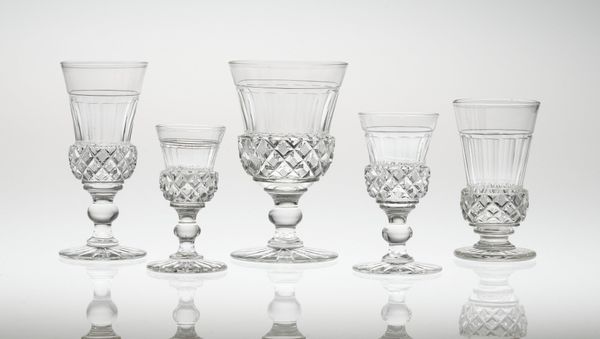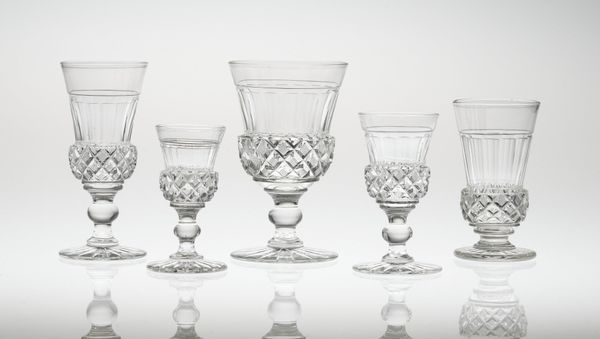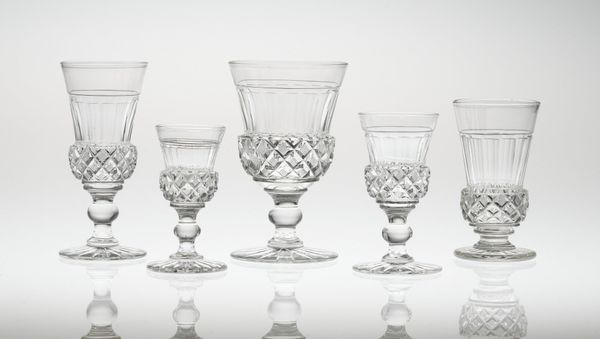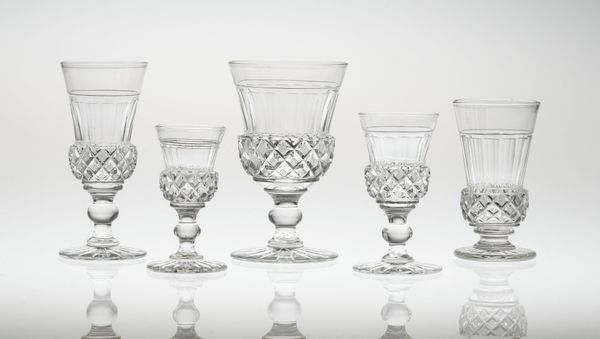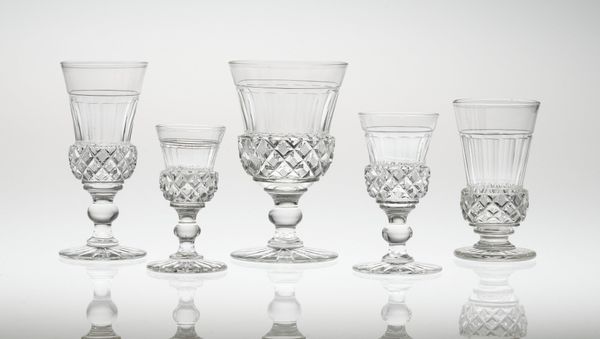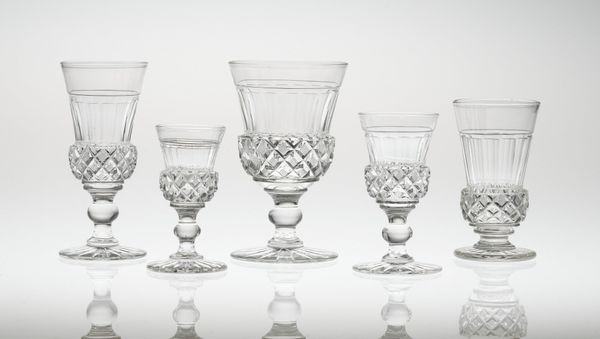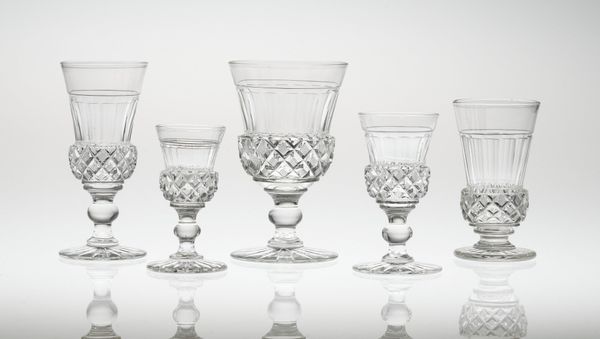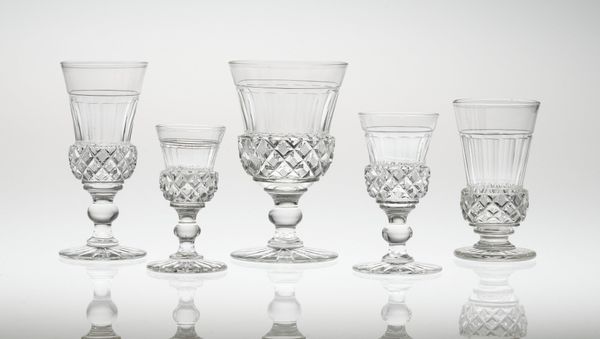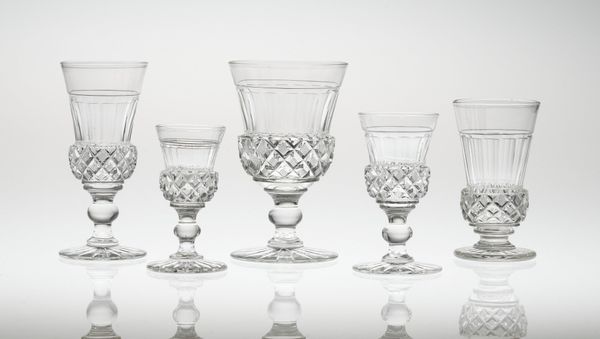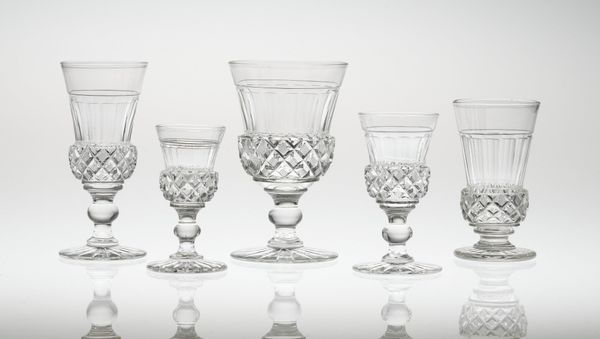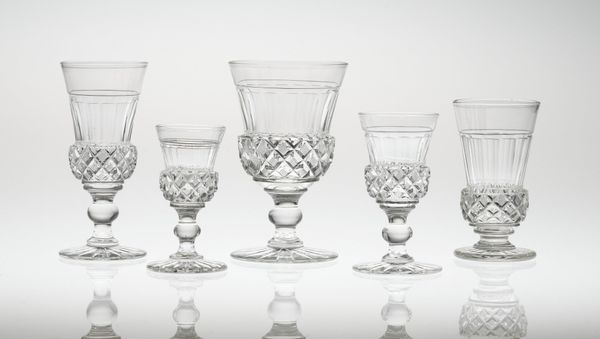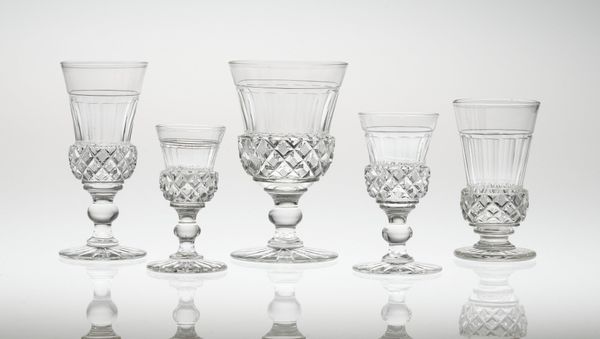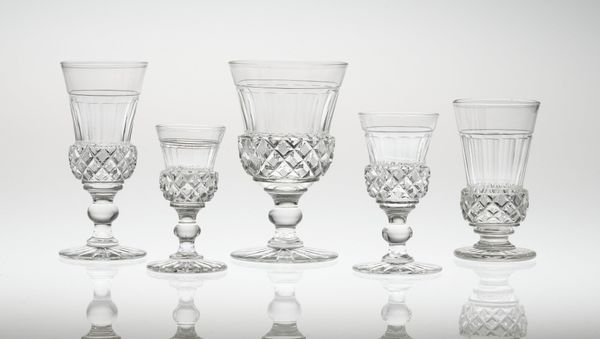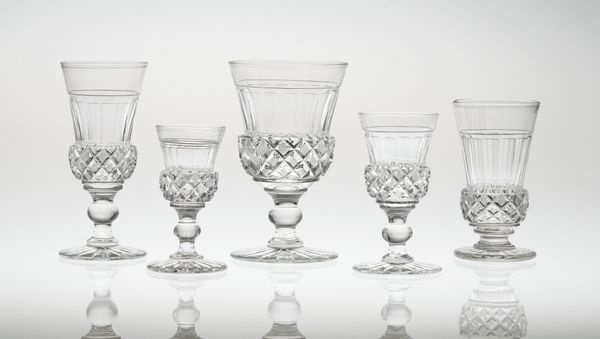
photography, glass
#
photography
#
glass
Dimensions: 5 1/4 x 3 1/4 x 3 1/4 in. (13.34 x 8.26 x 8.26 cm)
Copyright: Public Domain
Curator: Here we have "Water glass," created around 1830, its origins remain anonymous, though it resides here at the Minneapolis Institute of Art. It's quite a dazzling feat of early 19th-century glassmaking, wouldn't you agree? Editor: Absolutely, it's striking! What I see immediately are these repeating geometric patterns. The light dances so precisely within those diamond cuts—it gives the glasses almost a crystalline, magical quality. Curator: The act of elevating mundane domestic items into the realm of display underscores how objects gain cultural importance when showcased in spaces such as this. Notice the variety of forms presented. Each reflects particular preferences from its era, shaping our vision of ideal domestic life at the time. Editor: Those multifaceted designs just beneath the vessel invite contemplation. The cuts speak to social ritual, to refinement, perhaps even to a rising bourgeois desire to display status through careful ornamentation of everyday objects. Curator: These forms weren't merely aesthetic. Consider how specific drinking rituals dictated design. Each one was created for very particular uses, which reveals details regarding dietary choices or fashionable beverages during the era. The symbolism is further deepened as these glasses begin to shape behavior around a shared act: that of drinking, community, and societal decorum. Editor: It seems more than simple functionality. They transform the act of drinking water into an occasion, suggesting something fundamentally symbolic. These water glasses transcend function and turn water into some form of holy offering with sacred importance, wouldn't you agree? Curator: Definitely! This selection represents an era of burgeoning consumer culture, demonstrating society's developing connection with decorative art and domestic luxury in social environments and contexts. They offer insight to not only drinking traditions of the past, but how individuals engaged inside societal frameworks and cultural preferences regarding presentation within the 19th century. Editor: Observing "Water glass," illuminates how seemingly common items carry complex meanings connected with class, ceremonial behavior, and that drive to impart symbolic quality even upon the simplest functions. It also speaks about our relentless, yet understandable yearning for order within daily experiences. Curator: In studying items like this we get more than just style or history. It offers valuable insight on values of their era which are woven in day-to-day lifestyles. Editor: Perfectly said. By examining commonplace objects of the past, we unveil universal attributes which influence our customs and perceptions in new and interesting ways.
Comments
No comments
Be the first to comment and join the conversation on the ultimate creative platform.
